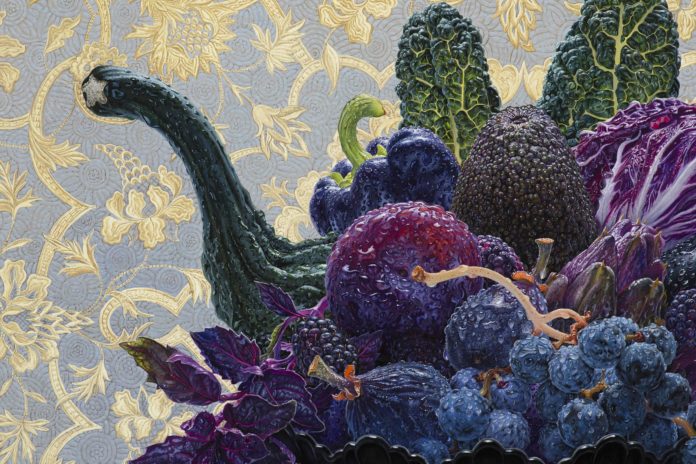Contemporary still life artist Eric Wert has been painting professionally for 20 years and has had his work featured in many solo exhibits, as well as over 100 group shows and art fairs around the U.S. and abroad.
With this guest blog post, go behind the scenes of how Wert creates realistic, Dutch-inspired still life paintings of subjects that are common, yet “unknowable.”
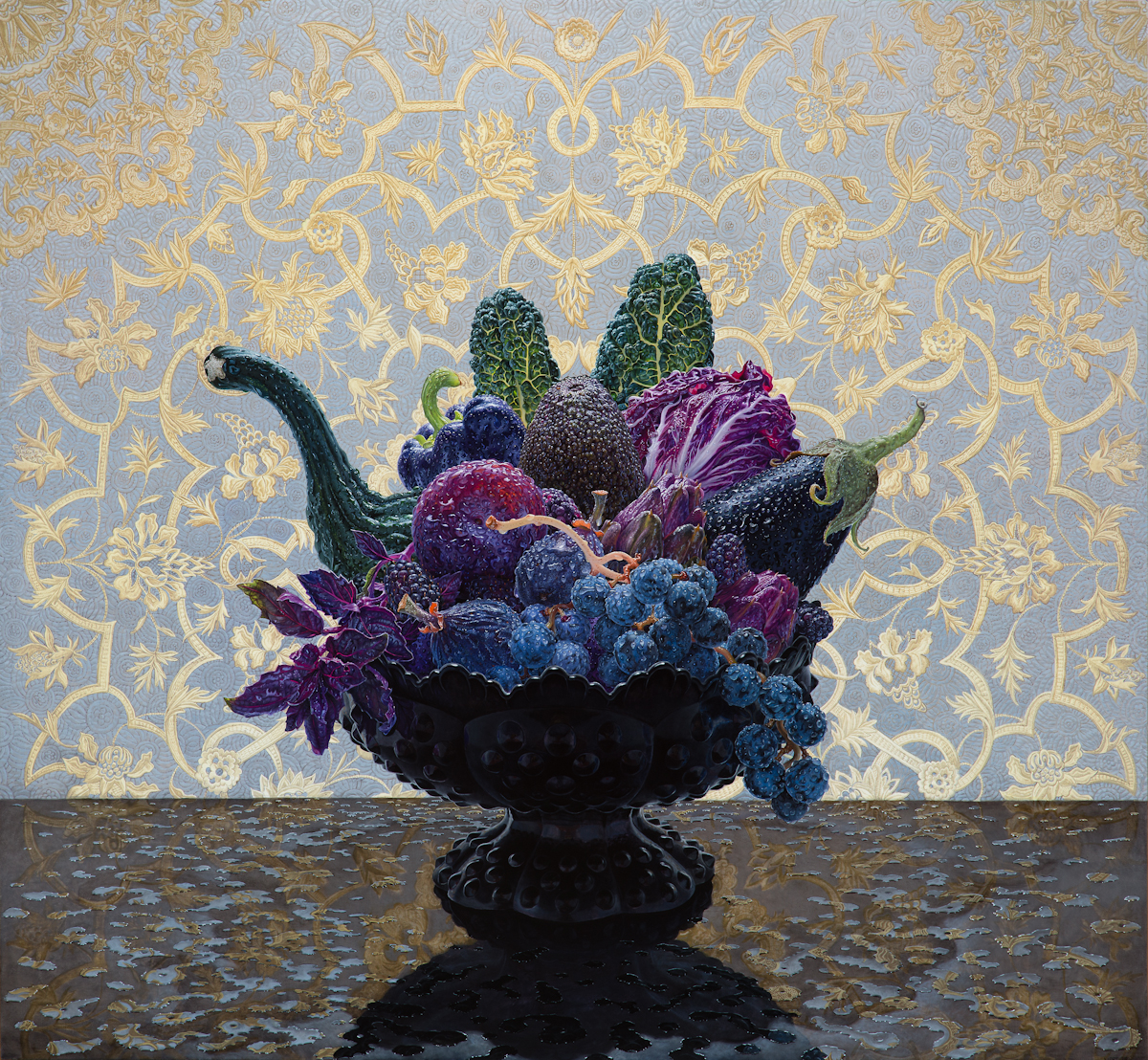
Other Life
BY ERIC WERT
What I love most about painting is observing a subject so intensely that everyday associations melt away and it becomes something unfamiliar—like repeating a word over and over until it loses meaning and becomes just a sound. The experience of painting common subjects reveals just how unknowable they truly are. The more I look, the more mysterious the world becomes: we are on an alien planet enveloped by other life.
My work has a clear connection to still lifes of the Dutch Golden Age. Back then, scientists were artists and artists were scientists. For motivation, I study the work of painters from that era, such as Rachel Ruysch, Jan De Heem, and Otto Marseus van Schrieck. While I admire their virtuosity, I especially love them because they are so strange. They achieve an insane sense of clarity that allows you to see even the most banal subjects with freshly peeled eyes.
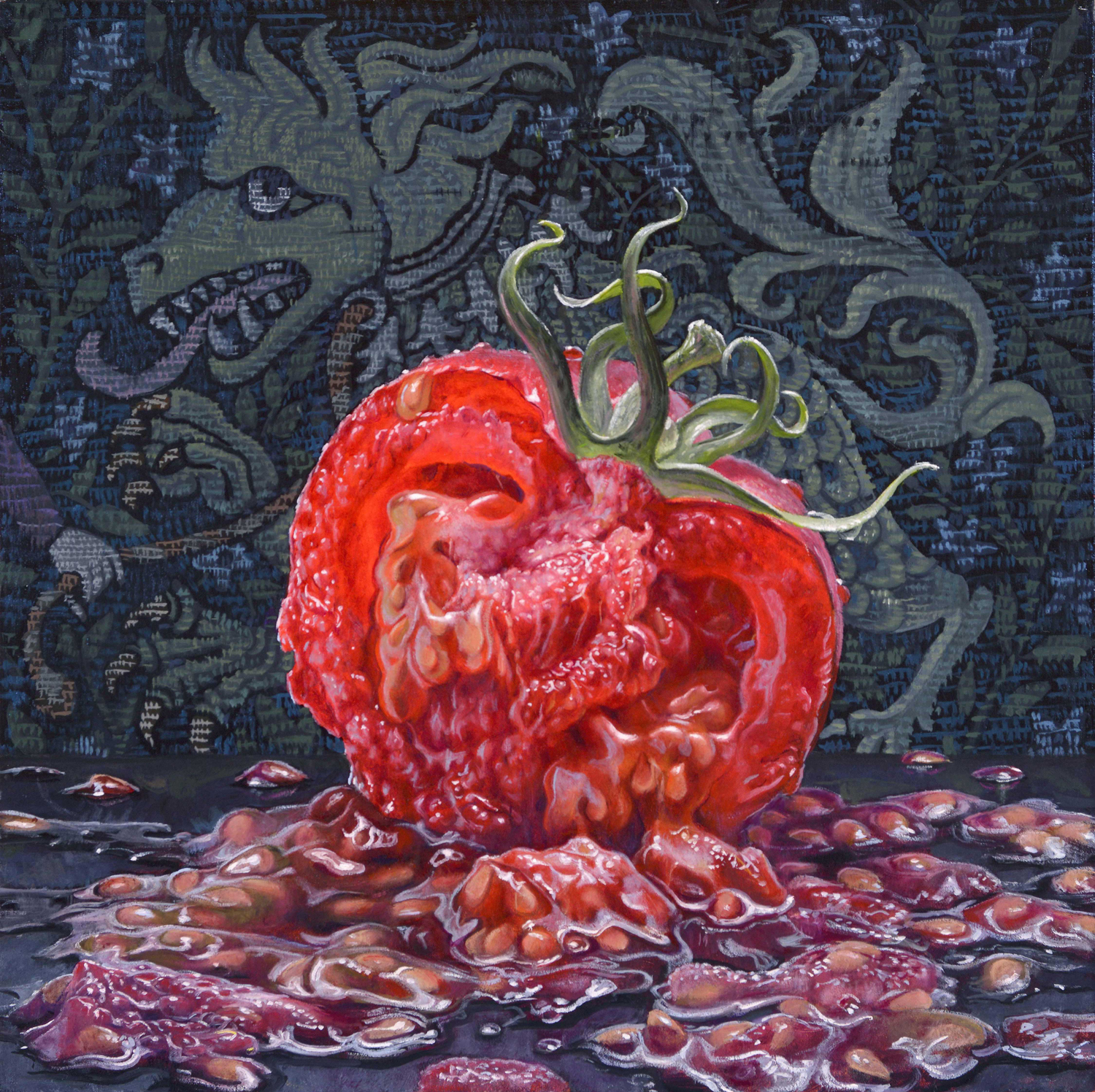
The ideas for my paintings come together slowly by accumulating a variety of physical and digital source materials. It can take years for the right combination of elements to click. In “Nimbus” (2019; below), I had the hobnail vase for 10 years just waiting for the right painting. The flowers were in bloom at different times. For example, the wisteria in the foreground bloomed well after the underpainting had begun, but was too perfect to omit, so the composition was rearranged to make it fit.
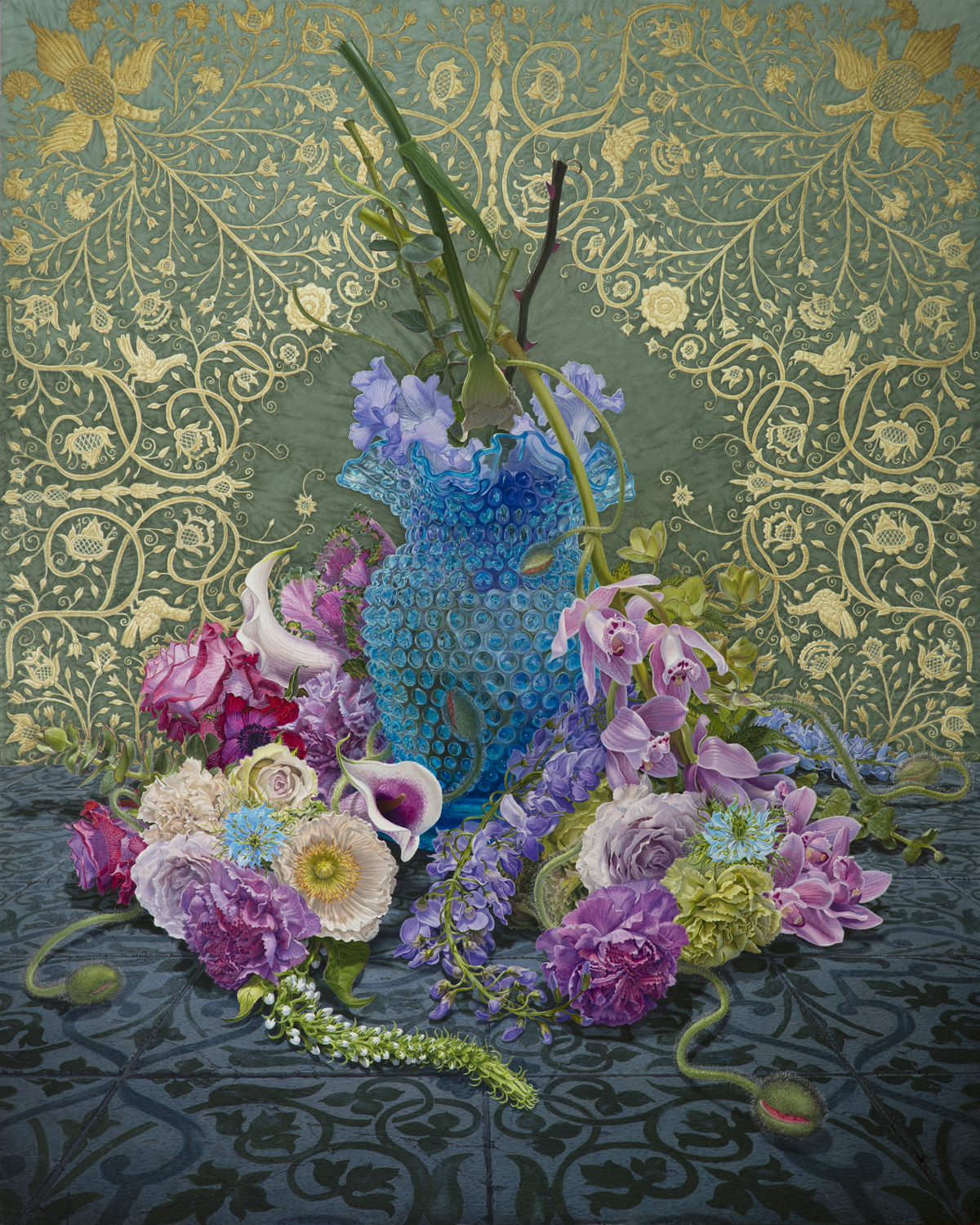
The still life paintings are carefully developed in stages. I work with perishable objects, so photographs provide a valuable reference, long after the original objects have decayed. Each element in a painting is photographed individually many times and from many angles to provide a thorough understanding of its three-dimensional form. With this approach, I am not limited to a single photograph if something needs to be turned, changed or added, and can manipulate elements to create the optimal composition. The finished painting may be more akin to a collage than a record of a scene that really existed.
My paintings begin with a grisaille, a black and white under painting that has its roots in Renaissance painting. Years ago, I painted more directly, without such an explicit underpainting, but as the work became more complex, I needed a way to organize the structure more fully. After a few near nervous breakdowns using a faster, but less carefully planned technique, I looked to the intricate work of the Dutch Golden Age painters mentioned above for guidance. Working in layers makes the painting considerably more labor intensive, but it also makes later stages much less stressful, and makes it possible to achieve greater clarity and more luminous color.
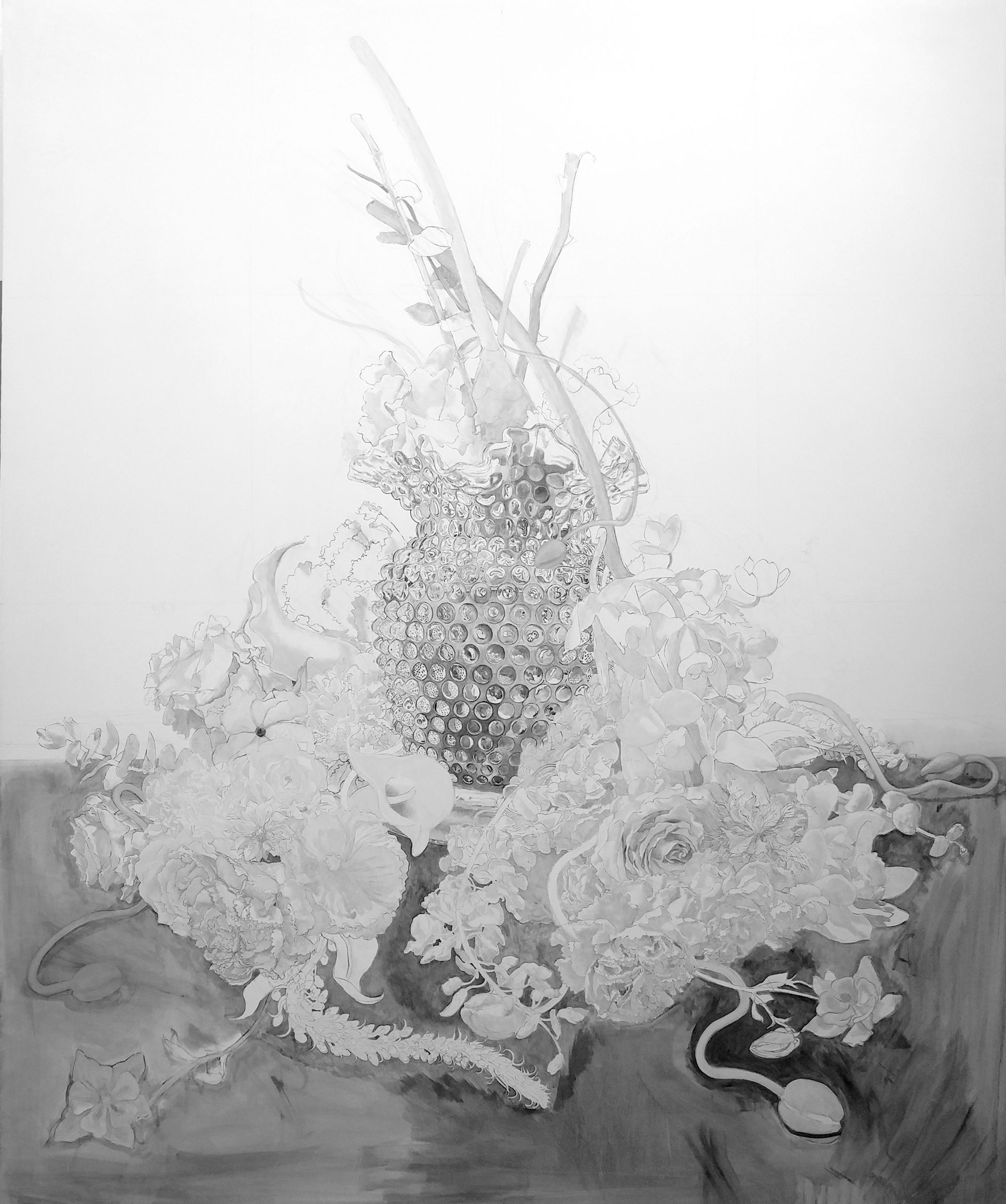
Still Life Paintings that Glow
After the grisaille has dried, I apply a layer of the most intense transparent pigment of the local color for each object. It is always possible to make a hue duller but not always possible to return to the intensity that is achieved when painting a thin transparent hue over a white ground. This helps my paintings to “glow,” especially when seen in person, and that glow has to be planned from the very beginning—as if it was being painted from the inside out. In “Nimbus,” this effect is especially visible in the translucent blue hobnail vase.
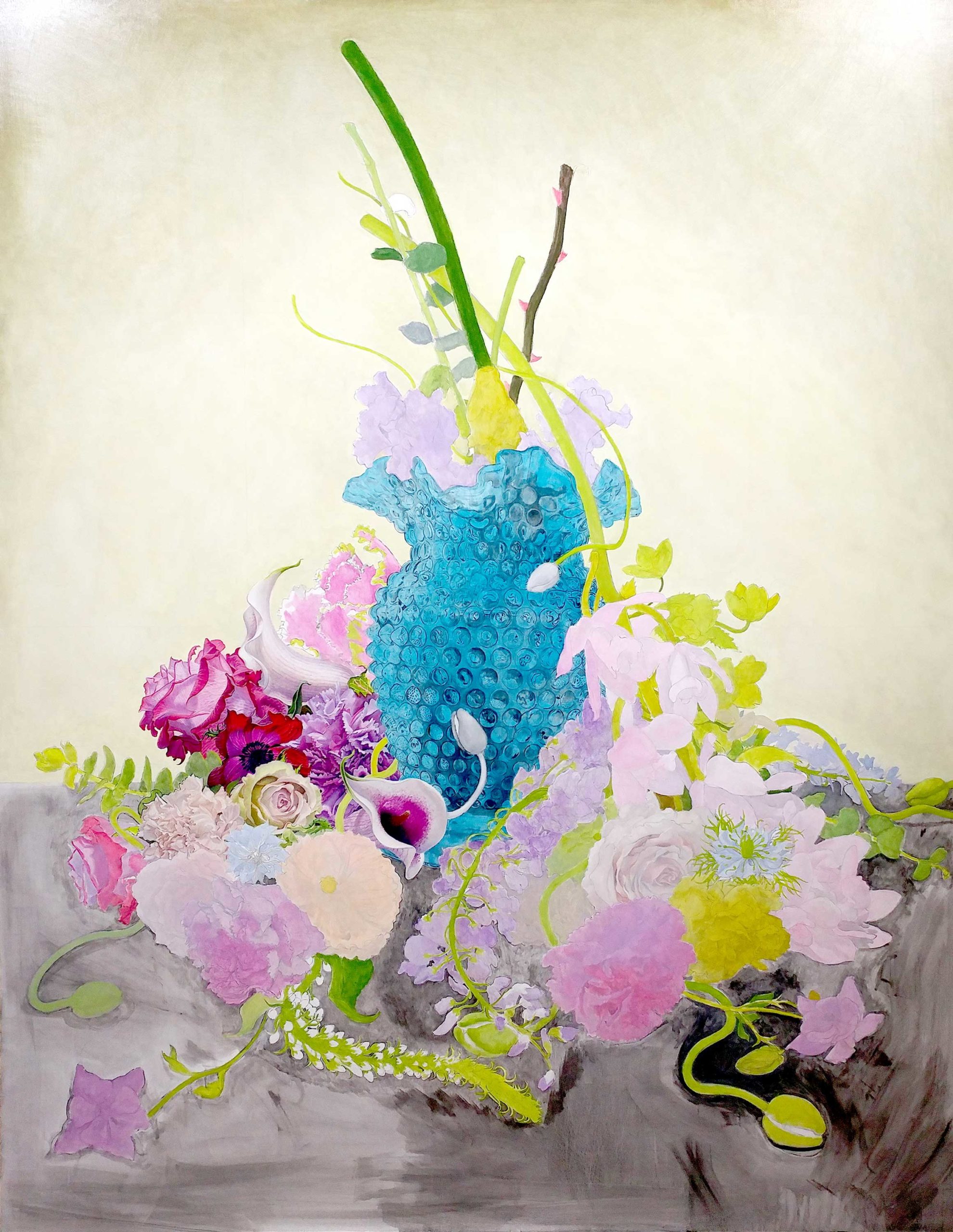
With preparatory work done, it’s time to settle in and resolve the still life. Early stages were concerned with basic color, value, and composition, and thinking about the painting as more of an abstraction than as a representational image. It is important to ensure that the major formal qualities are engaging and balanced before painting any details.
With those elements developed, I can concentrate on resolving the surface textures and details. Now that I have a good guide, the rest can be painted in a rather direct fashion, wet into wet (albeit with small brushes).
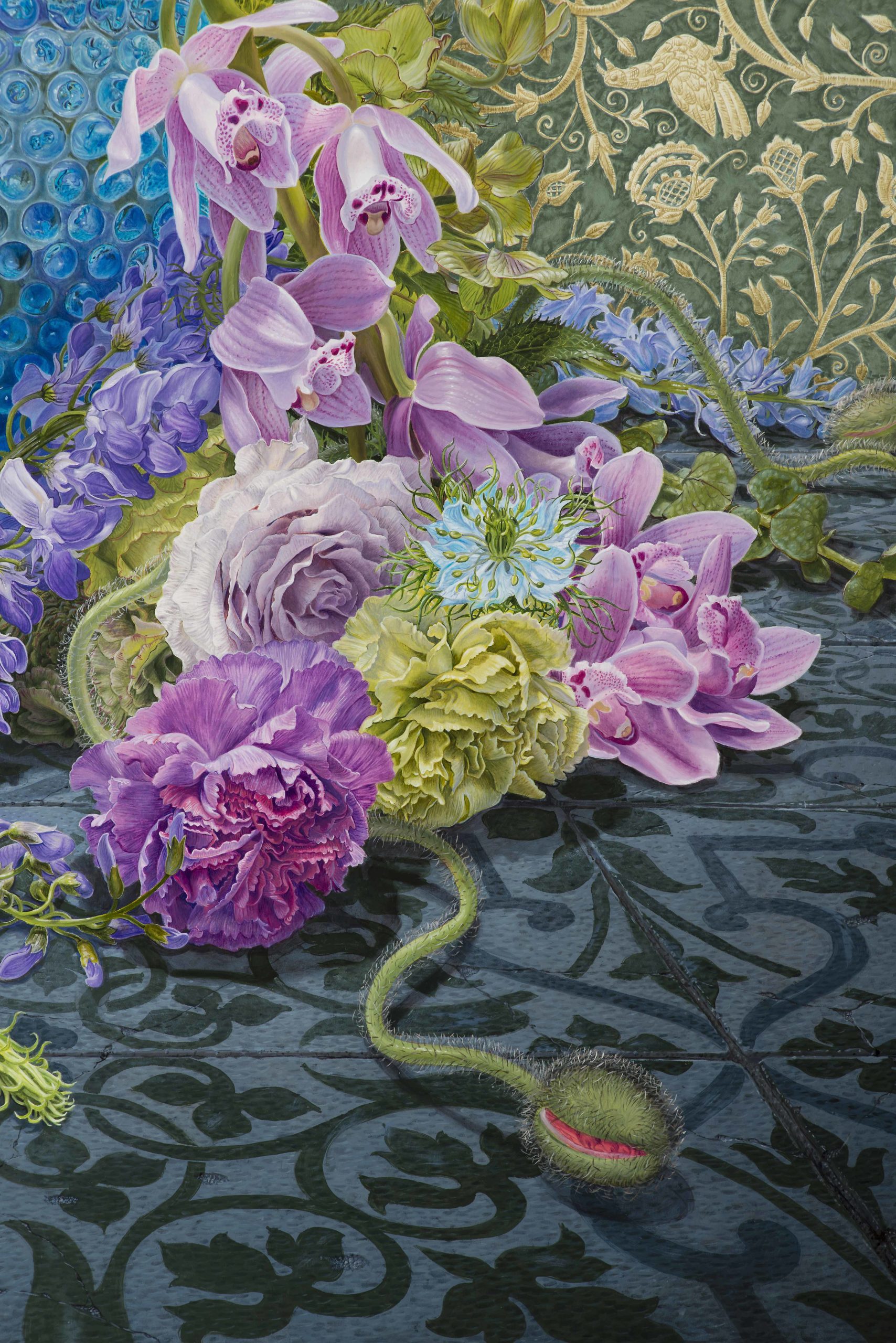
Reference to both photographic sources and to real objects are used to paint the still life elements. Whenever possible, I like to have the object in front of me. In particular, I like to be able to hold it in my hand while working and be able to move my fingers over the surface to get a sense of the tactile qualities, which can often be misleading in a photograph.* Careful planning early leads to more freedom and confidence later.
Conveying a recognizable image of a flower or piece of fruit happens relatively early in the process, but my favorite part of the painting happens days or weeks later when I stop trying to control it—when I get out of the way and let the object reveal its other self.
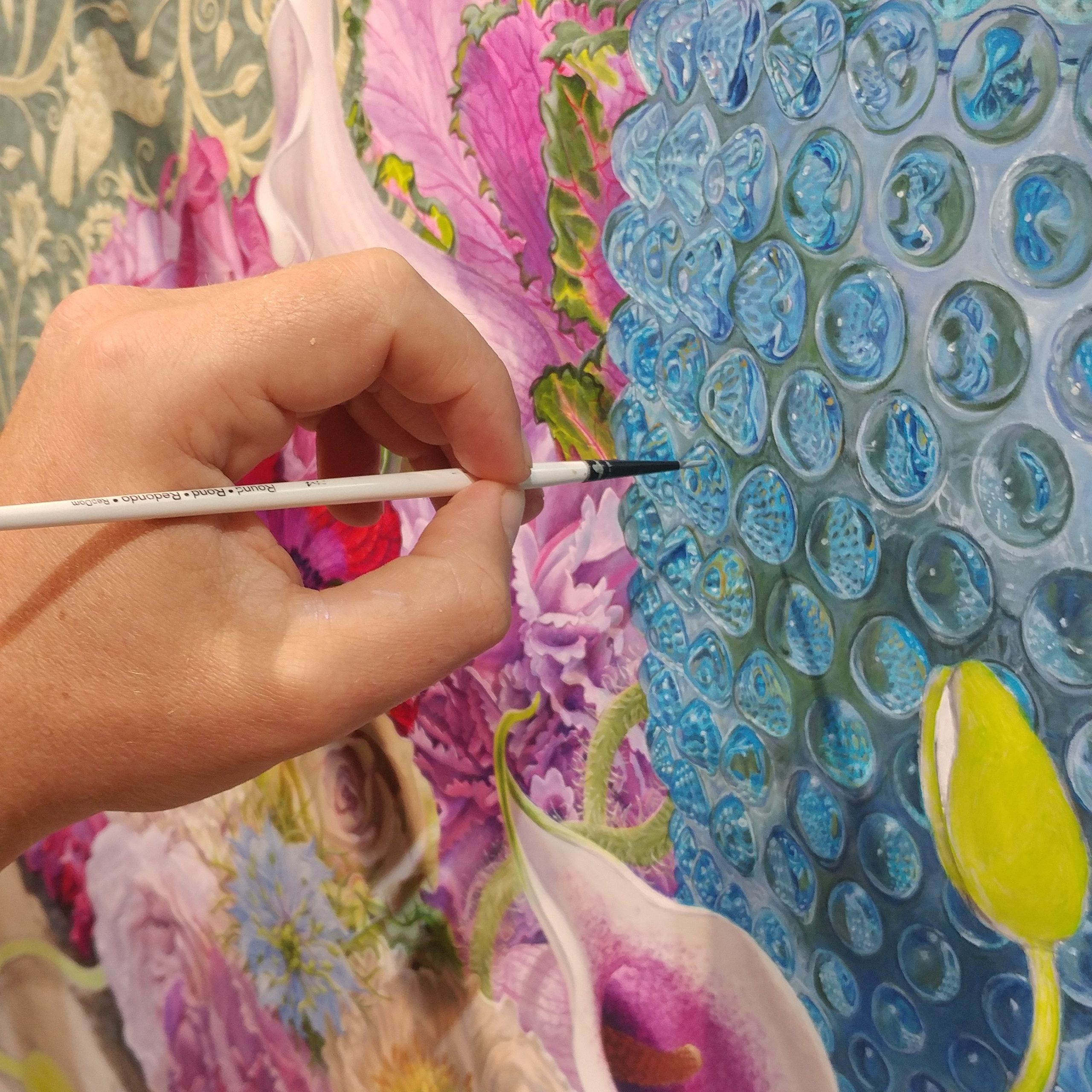
Making Every Inch Count in a Still Life Painting
Earlier in my career, my paintings featured neutral flat backgrounds to keep the focus solely on the still life subject—a holdover from my training as a scientific illustrator. But it felt unsatisfying. The whole world is a fascinating place—why ignore two-thirds of the composition? So, I began looking for ways to activate the entirety of the painting to make every inch worthy of inspection.
Over the years, intricate textile backgrounds have become an integral element in my work. I employ aspects of historical pieces from museum collections all over the world to create more active narrative compositions and challenging color relationships.
The unifying motif in “Nimbus” is the embroidered serpentine line work in the background, which is reiterated in the arrangement of the bouquet and again in the design of the tile. The textile background was created by repeating a small section of an 18th-century Chinese coverlet, sourced from the Museum of Fine Arts, Boston collection. The cacophony of spring flowers spills out of this orderly organic lattice of gilded stitching.
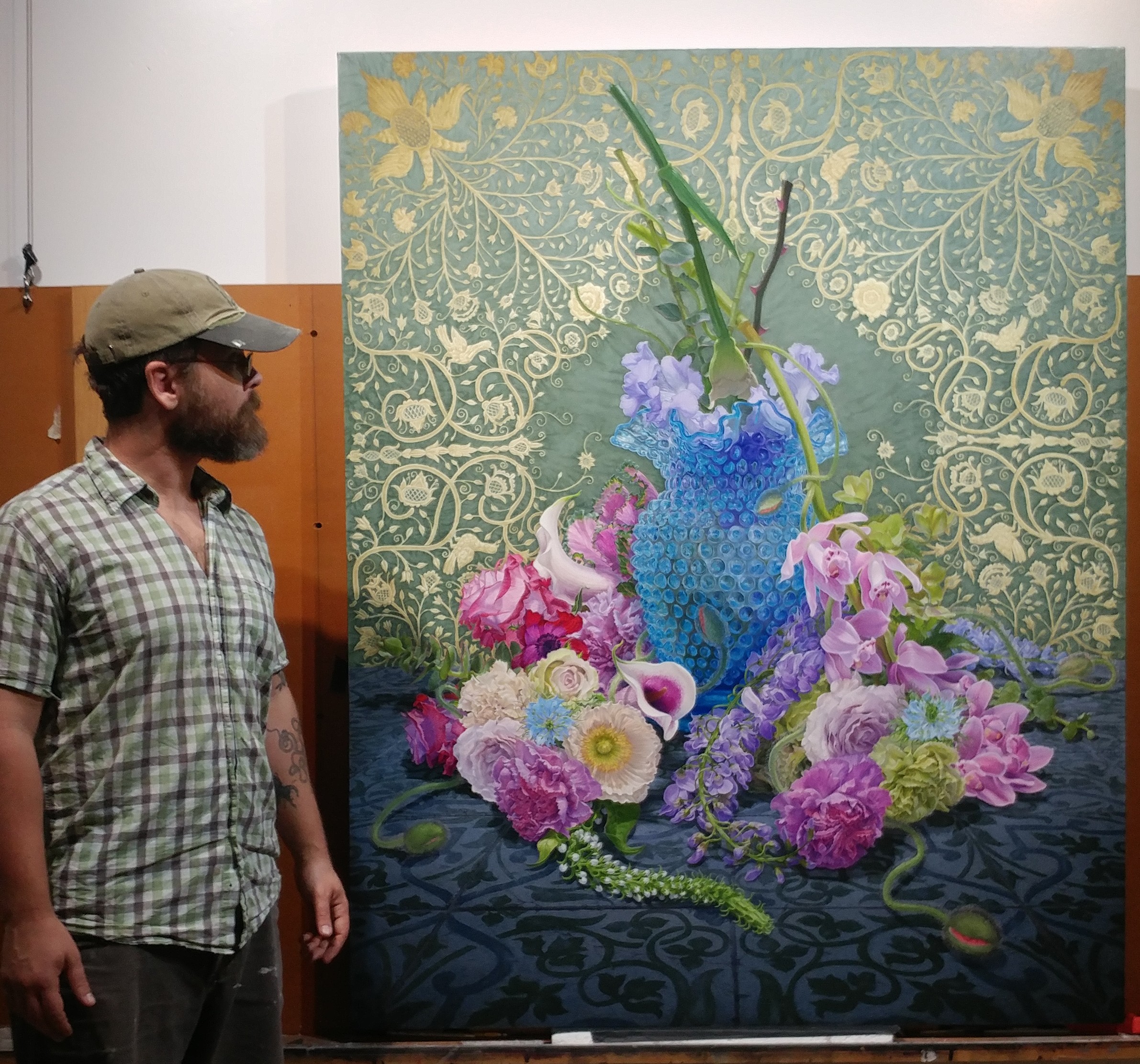
I think of my paintings as part of the Vanitas tradition, a genre meant to remind viewers of the fleeting nature of life, wealth, relationships, and understanding. That may sound maudlin, but the acknowledgment of impermanence allows me to more richly appreciate my present experience.
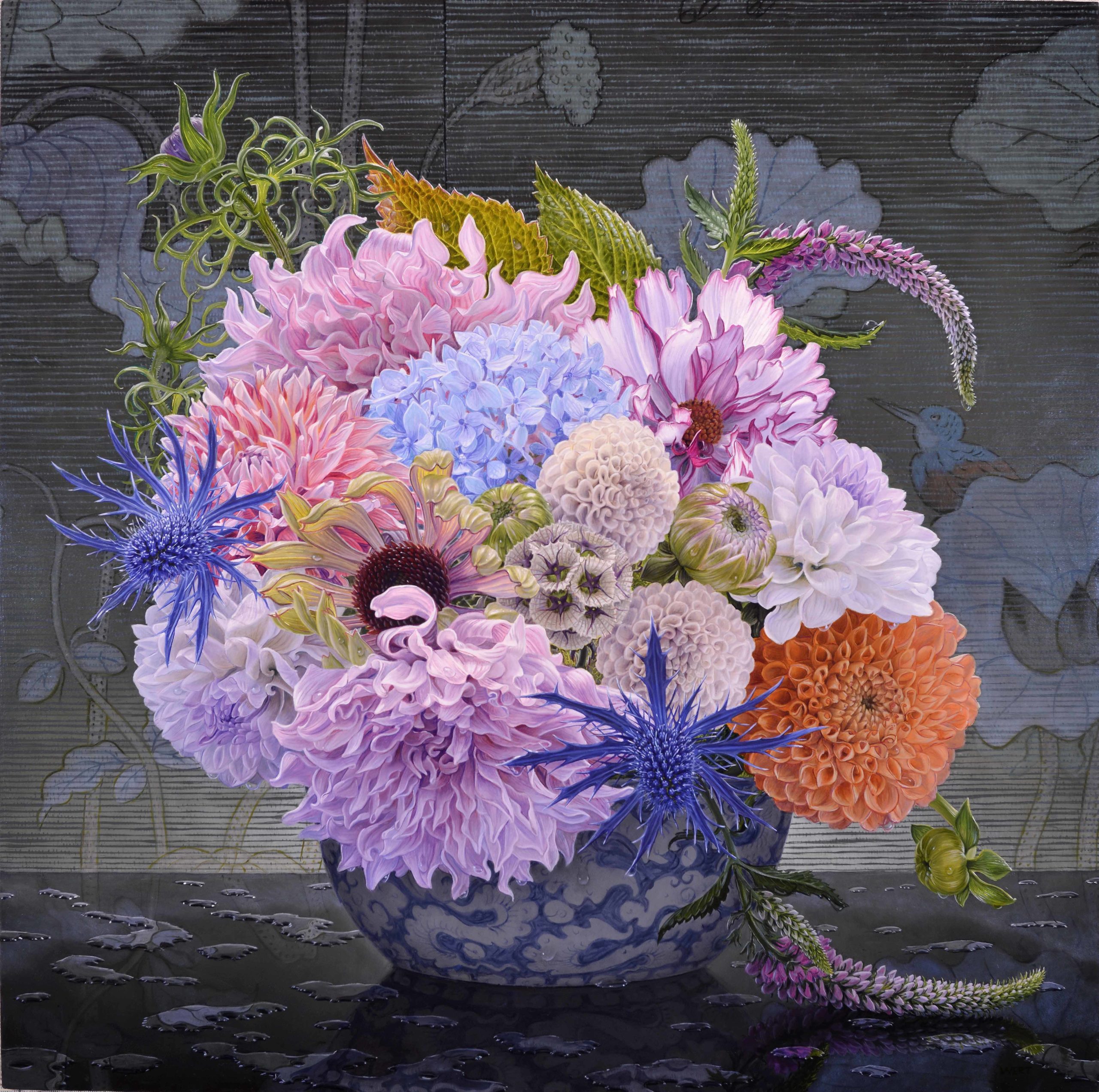
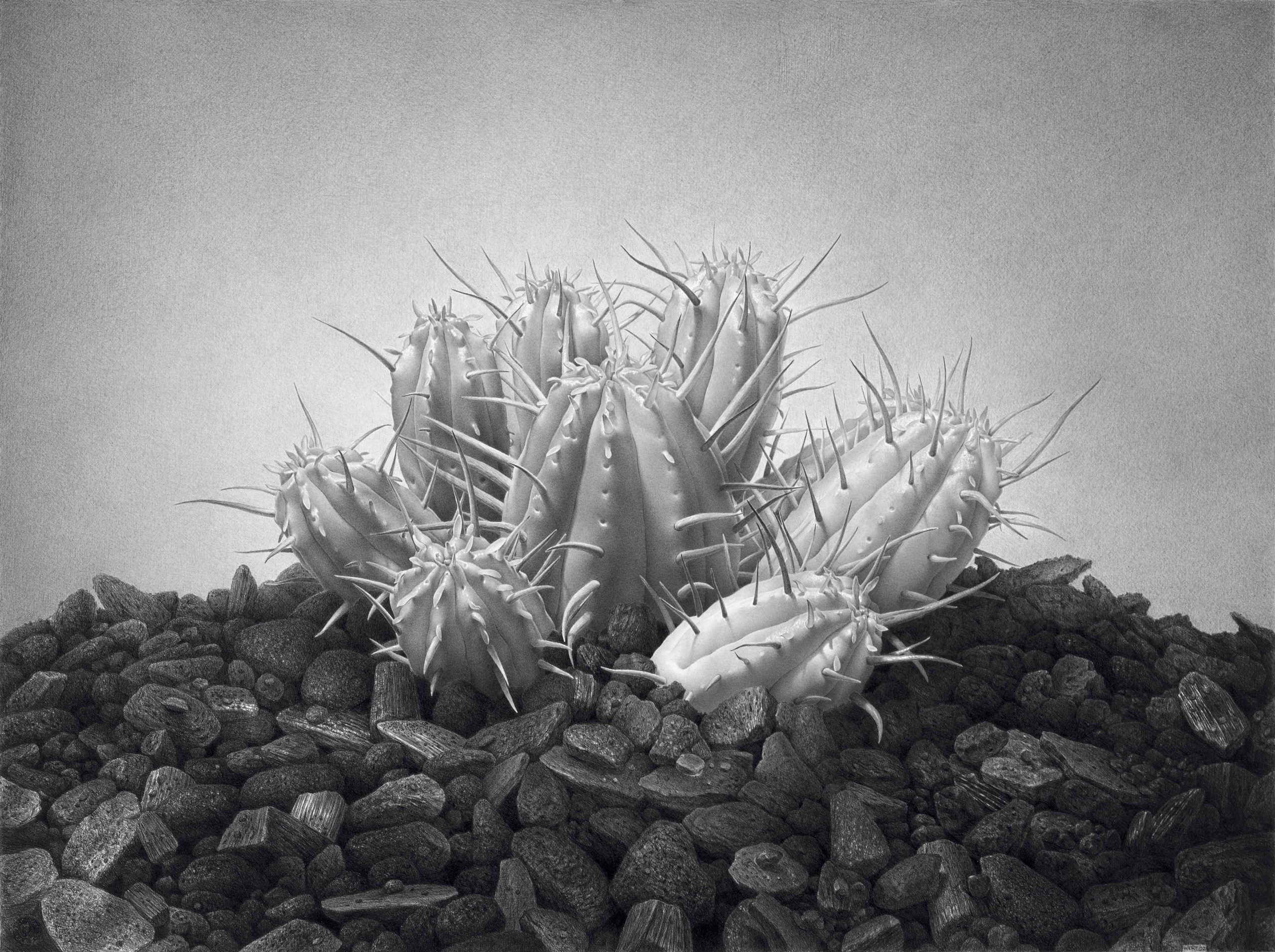
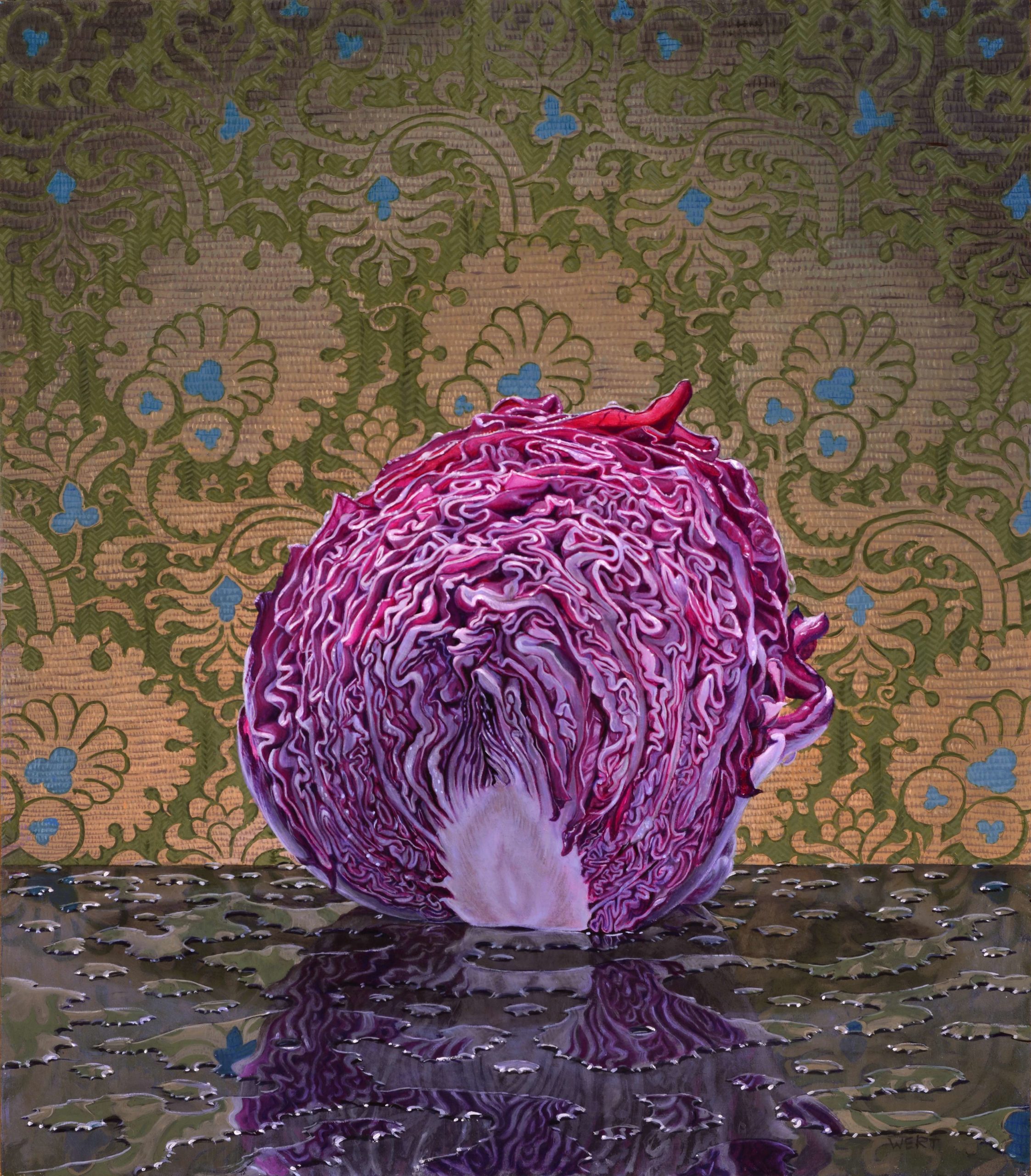
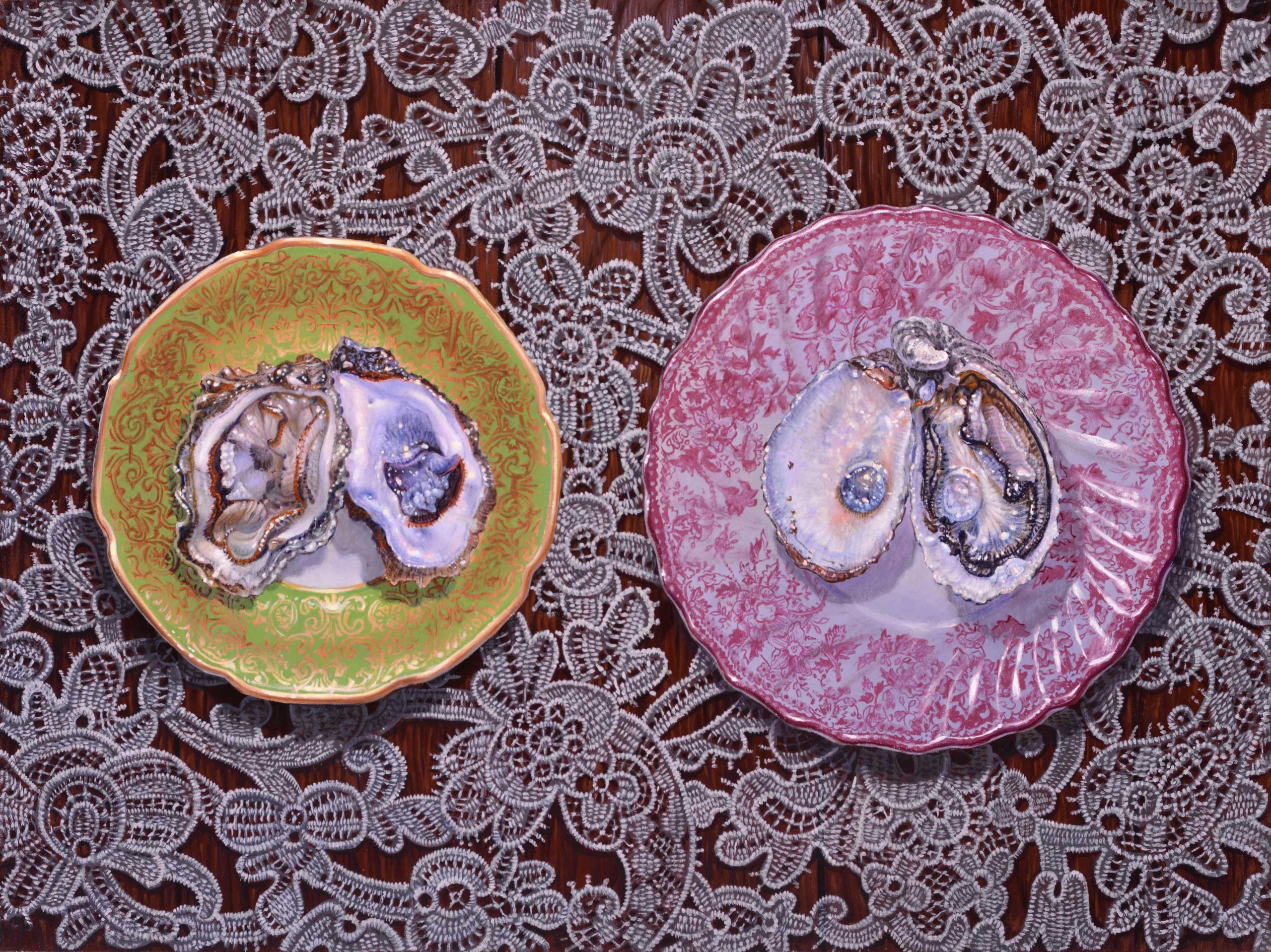
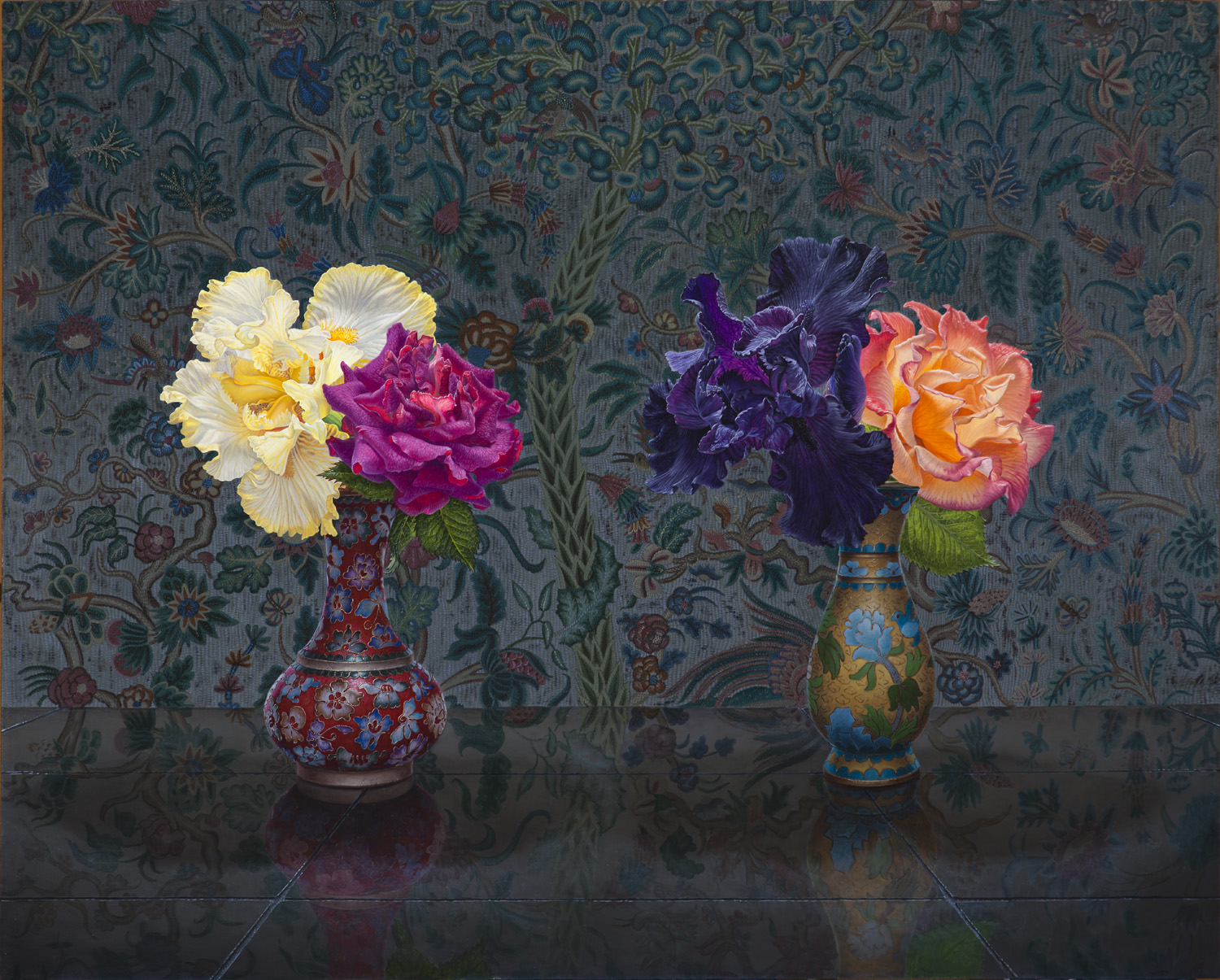
“Eric Wert: Other Life” is on view September 24 – October 17, 2020, at Gallery Henoch, 555 W. 25th ave, New York, NY, (917) 305-0003; www.galleryhenoch.com.
To see more, visit www.werteric.com.
*The text regarding the artist’s process is adapted from the monograph Eric Wert: Still Life (Pomegranate Communications, Portland, OR, 2018).
Browse more articles on still life painting here.
- Visit PaintTube.tv to learn how to paint portraits and figures in the style of contemporary realism, and much more.
- Join us for the next annual Realism Live virtual art conference and study with the world’s best realism artists.
- Become a Realism Today Ambassador for the chance to see your work featured in our newsletter, on our social media, and on this site.


